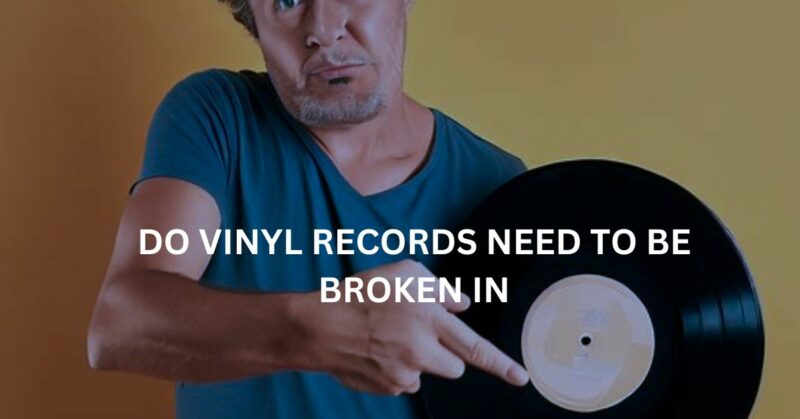Vinyl records have seen a resurgence in popularity, captivating music enthusiasts with their warm and nostalgic sound. However, a longstanding debate revolves around whether vinyl records need to be “broken in” before reaching their optimal audio quality. In this article, we’ll delve into the truth behind this notion and dispel the myths surrounding vinyl record break-in.
Understanding the Basics of Vinyl Records
Before we address the concept of breaking in vinyl records, it’s essential to comprehend the fundamental structure of these beloved music carriers. Vinyl records are made from a polyvinyl chloride (PVC) compound, which is pressed into a disc shape and engraved with grooves that represent the audio waveform. When a stylus is placed on the record’s surface and spins, it follows the grooves, translating the physical grooves into audible sound. With this foundation in mind, let’s explore the idea of breaking in vinyl records.
The Concept of Breaking in Vinyl Records
The notion of breaking in vinyl records suggests that playing them repeatedly will improve their sound quality over time. Proponents argue that the repeated motion of the stylus traversing the grooves gradually smooths out imperfections, leading to enhanced audio fidelity. However, this concept lacks scientific evidence and is primarily rooted in personal experiences and anecdotes.
The Role of Vinyl Record Manufacturing
Vinyl record manufacturing involves various stages, including cutting the master lacquer, creating stampers, and pressing the vinyl discs. These processes determine the overall quality of the record. Manufacturers employ high precision techniques to ensure minimal imperfections and optimal playback from the very first spin. As a result, the need for breaking in records becomes questionable.
Maintaining and Cleaning Vinyl Records
Instead of focusing on breaking in records, it is more important to emphasize proper maintenance and cleaning practices. Dust, dirt, and debris can accumulate on the record’s surface, causing audible imperfections. Regular cleaning using appropriate techniques and tools can significantly enhance the playback experience. It’s recommended to use a carbon fiber brush or a microfiber cloth to gently remove dust particles before each play. Additionally, storing records in protective sleeves and keeping them in a cool, dry environment can help preserve their condition.
The Importance of a High-Quality Turntable and Cartridge
Investing in a high-quality turntable and cartridge is crucial for obtaining the best possible sound from your vinyl records. A poorly calibrated or worn-out turntable may introduce additional distortions and affect the overall audio quality. Ensuring proper tracking force and alignment of the cartridge can minimize wear on the grooves and maintain the record’s longevity.
Trusting Your Ears: Subjectivity in Vinyl Listening
It’s worth noting that personal preferences and individual listening experiences play a significant role in how one perceives vinyl record sound quality. Some may argue that records do sound better after repeated plays, but it could be attributed to the listener’s auditory adaptation or psychological factors rather than an actual “break-in” process.
In the world of vinyl records, the concept of breaking in records remains largely subjective and lacks substantial scientific evidence. While personal experiences and preferences may vary, focusing on proper maintenance, cleaning, and investing in quality equipment are more likely to result in an enjoyable and long-lasting vinyl listening experience.

